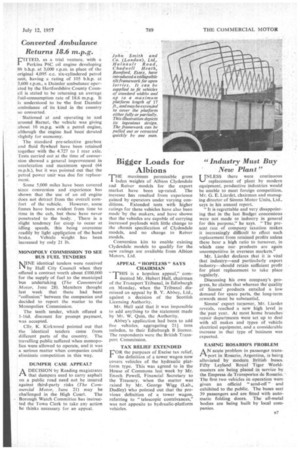Converted Ambulance Returns 18.6 'm.p.g.
Page 41

If you've noticed an error in this article please click here to report it so we can fix it.
Fli 1ED, as a trial venture, with a
Perkins P6C oil engine developing 88 b.h.p. at 3,000 r.p.m. in place of the original 4,095 c.c. six-cylindered petrol unit, having a rating of 105 b.h.p. at 3,600 r.p.m., a Daimler ambulance operated by the Hertfordshire County Council is stated to be returning an average fuel-consumption rate of 18.6 m.p.g. It is understood to be the first Daimler ambulance of its kind in the country so converted, Stationed at and operating in and around Barnet, the vehicle was giving about 10 mpg. with a petrol engine, although the engine had been derated slightly for economy.
The standard pre-selective gearbox and fluid flywheel have been retained together with the 4.727 to 1 rear axle. Tests carried out at the time of conversion showed a general improvement in acceleration and maximum speed (64 .m.p.h.), but it was pointed out that the petrol power unit was due for replacement Some 5,000 miles have been covered since conversion and experience has shown that the use of an oil engine does not detract from the overall comfort of the vehicle. However, some fumes have been evident from time to time in the cab, but these have never penetrated to the body. There is a slight tendency for creep to occur at idling speeds, this being overcome readily by light application of the hand brake. Vehicle weight has been increased by only 21 lb.




































































































